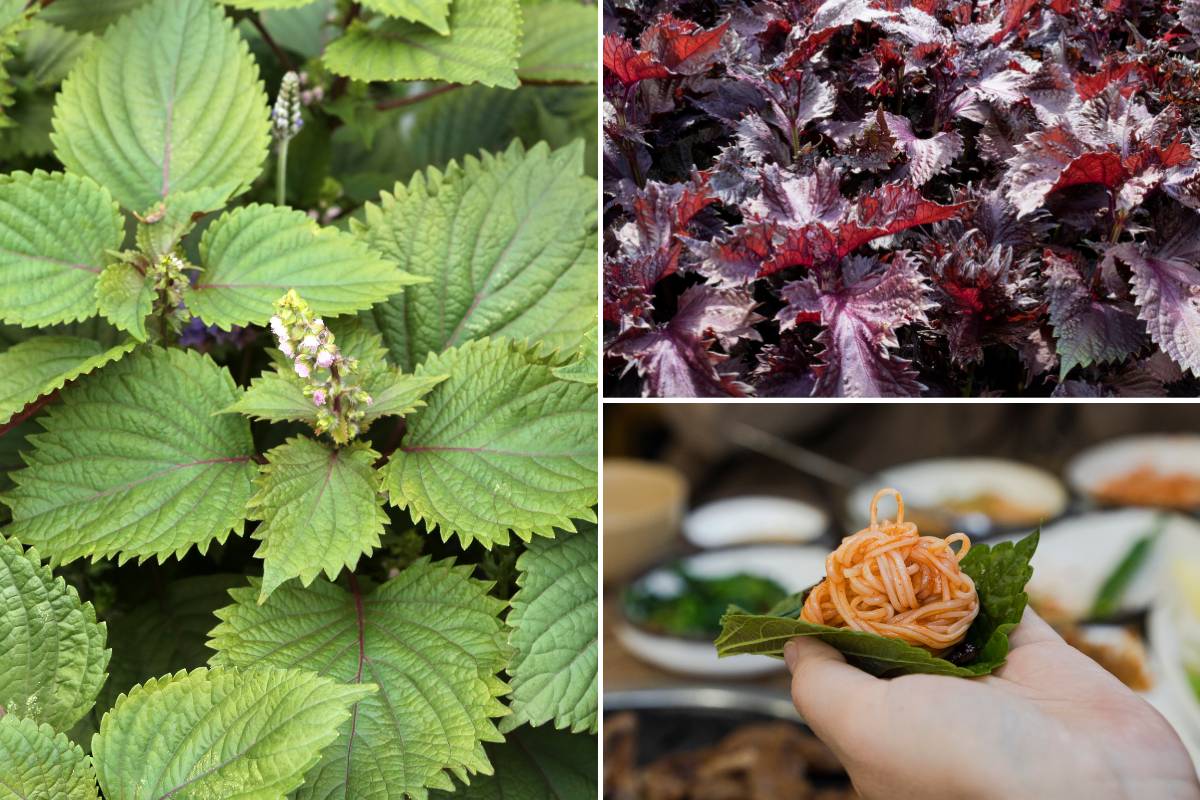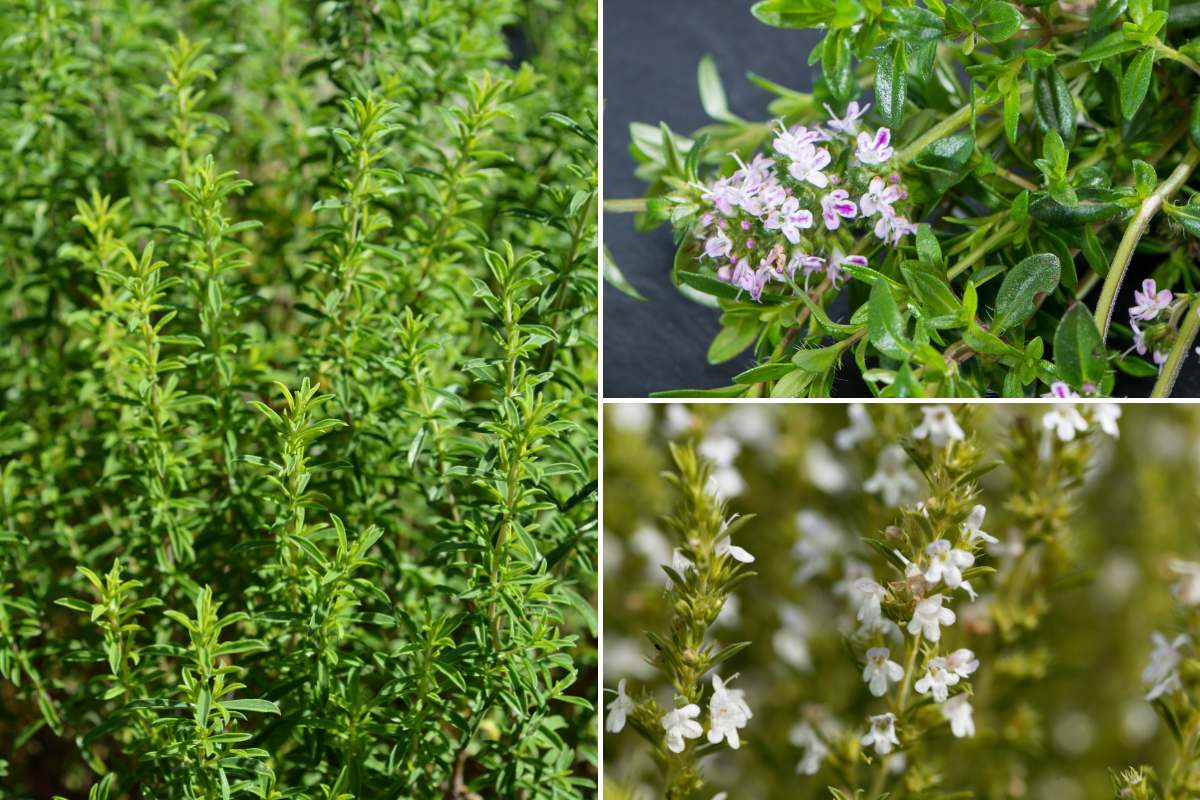Are you tired of growing the same herbs year after year? Then why not grow some perilla, mitsuba, lovage, chervil, and savory! Let’s explore these five unique herbs to diversify your garden and enhance your culinary experience.
If you feel your culinary experience has become a little flat, it's time to spice up your herb garden with five unique herbs. Perilla, mitsuba, lovage, chervil, and savory are incredibly versatile and grow in a wide range of conditions.
Whether you grow herbs in containers or have a herb plot in the garden, these often overlooked plants are guaranteed to add flair to your garden and zing in your kitchen. Let’s discover more about how to grow and use these herbs.
Perilla
Perilla (Perilla frutescens) is a member of the Lamiaceae, or mint, family. A native from southeast Asia, perilla also goes by the names shiso and beefsteak plant. As it is easily killed by frost, it is typically grown as an annual. It forms an attractive bush about 60cm tall and can have green or reddish-purple leaves.
In late summer, it produces spikes of pinkish or white flowers. While the flowers are edible, perilla is typically grown for its leaves which have a minty, basil-like flavour with notes of cumin, clove, and licorice. Perilla is something of an acquired taste and is often described as bitter and even slightly astringent, but many find it refreshing on a hot summer day.
Perilla is commonly used in sushi but can also be used in salads, stir fries, or pickled. It pairs nicely with many rice and noodle recipes, and the large leaves can even be used as wraps. It is also used in sweet dishes such as iced tea or ice cream.
Perilla Growing Tips
As a heat-loving plant, perilla thrives in summer and grows well in containers or as a bedding plant (see our complete perilla grow guide, here). Grow it in a full or partly sunny location that gets at least 3 hours of sun every day, in soil that is well draining and has been enriched with organic matter. Sow the seeds very shallow, and they should germinate in 7 to 21 days at 19-21°C.
The seeds can also be started indoors and transplanted when the seedlings are between 5-10cm tall.
Perilla takes around 70 days to reach maturity, with the red varieties taking slightly longer. The leaves can however be harvested as needed throughout the growing season. Leaves are best used fresh, but they can also be pickled and enjoyed all year long.
 Red and green perilla, and a perilla leaf used as a wrap
Red and green perilla, and a perilla leaf used as a wrap
Mitsuba
Also called Japanese parsley or Japanese hornwort, mitsuba (Cryptotaenia japonica) is an Asian green reminiscent of celery and Italian (flat leaf) parsley. It is a member of the Apiaceae (Umbellifer) family along with carrots and celery.
All parts of the plant are edible including the leaves, stems, roots, flowers, and seeds. It has a clean, fresh taste and is commonly used raw or cooked in salads, soups, stir fries, and many other dishes, but watch out because mitsuba can become bitter if it is cooked at too high a temperature.
Mitsuba Growing Tips
Mitsuba can become bitter if grown in full sun, so choose a spot that is moderately shady, especially in the hot summer afternoons.
Direct sow mitsuba seeds 5mm deep after all danger of frost has passed. The seeds should germinate in 5 to 10 days with a soil temperature between 20-25°C. Keep the soil consistently moist throughout the growing season, and it will be ready to harvest in around 50 days once the plant is 15-20cm tall. You can trim the flower stalks to keep the plant producing longer, but succession planting every 4 weeks will ensure a continuous harvest.
.jpg) All parts of Mitsuba are edible
All parts of Mitsuba are edible
Lovage
From the eastern Mediterranean, lovage (Levisticum officinale) is a hardy perennial. It is amazingly versatile in the kitchen with its strong celery flavour, and all parts of the plant can be used. While the young leaves are the most commonly eaten, the stalks can be blanched like celery, the roots eaten as a vegetable, and the seeds are the spice celery seed.
Lovage also bears a striking physical resemblance to celery, but crowns the season with 2m tall stalks topped with yellow flower clusters that are great for pollinators. A single plant can also grow to over 1m across when fully mature after a few years.
Lovage Growing Tips
Start growing lovage indoors or direct sow it into your garden (it also works very well in containers). Sow the seeds 6mm deep and they should germinate in 1 to 3 weeks with a soil temperature of 20-25°C. Amend the soil with compost or well-rotted manure at planting time.
Since the plants can grow quite large, space mature plants around 1m apart, or you can lightly scatter the seeds for greater coverage. Keep the plants well watered for best results, especially in dry weather. They will also benefit from a layer of organic mulch.
The plants will mature in around 90 days, but the leaves can be harvested as needed throughout the growing season. In fact, picking encourages continuous leaf growth.
 Lovage has yellow flower heads on tall stalks
Lovage has yellow flower heads on tall stalks
Chervil
Chervil (Anthriscus cerefolium) is also called gourmet parsley and is spelled chevril in French. It has a strong parsley flavour with a mild anise hint. It is incredibly versatile and is often used with soups, salads, fried vegetables, poultry, seafood, and egg dishes.
Chervil is a biennial, which means it takes two years to complete its growing cycle, however it is typically grown as an annual. If left to overwinter, it will produce stems bearing clusters of white flowers the following year. It grows to 50cm tall.
Chervil Growing Tips
Chervil can be grown in containers, started indoors, or sown directly into the garden (read more about growing this here). Sow the seeds 6mm deep, and allow 10 to 14 days for them to germinate at a soil temperature of 13-20°C.
Space mature plants 30cm apart or scatter the seeds in a prepared seedbed. Enrich the planting area with organic matter. Chervil grows well in full sun to shade.
Chervil matures in 60 to 70 days, but leaves can be harvested as needed by pinching them off and letting the rest of the plant continue growing.
It flowers quickly after maturing, and bolts very quickly in hot weather, so practice succession planting for continuous production.
 Chervil will flower in its second year
Chervil will flower in its second year
Savory
Another member of the mint (Lamiaceae) family, savory has a strong peppery flavour that pairs nicely with soups, stews, meat, fish, and egg dishes. It can also be used as a garnish or condiment, as well as in potpourri.
Summer savory (Satureja hortensis) is an annual and grows to 40cm tall. Winter savory (Satureja montana) is a bushy, compact perennial shrub that has a stronger flavour than the summer variant. Savory produces spikes of flowers that can be pale mauve, white or pink and attract droves of pollinators to the garden.
Savory Growing Tips
Savory seeds take 1 to 2 weeks to germinate at 20-22°C. Best grown in a position that receives at least 6 hours of sunlight each day, and in well drained soil that has plenty of organic matter. It makes an excellent addition to borders or rock gardens.
The plant is ready to harvest in 60 to 70 days, and the leaves can be harvested throughout the growing season. Read more about growing savory in our other article, here.
 Savory can have pale mauve, pink, or white flowers
Savory can have pale mauve, pink, or white flowers
***
If you are tired of growing the same plants every year, there is no reason to stay stuck in a rut. By trying out one or more of these herbs, you are sure to be rewarded with a diverse, aromatic herb garden that exceeds your expectations.





